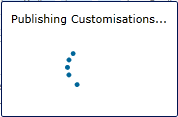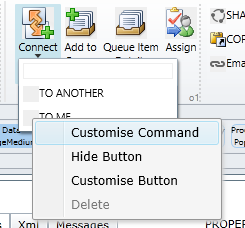Until CRM 4 there were Workflows that could be used for asynchronous processing of business logic, generally used for setting up automated actions and defining sales process in Dynamics CRM.
Since CRM 2011, the workflows became a category under Processes and there was another category Dialogs introduced. Dialogs provided for execution of Dialog scripts to set up process flows for the Salesforce. These could be used to guide the sales people through the sales process using a question/answer format. The Dialog included execution of automated steps like the workflows.
With CRM 2013, the Processes have been extended to now include Business Process Flow and Actions in addition to the categories from the previous versions. In our earlier blog we have discussed the concept of Business Process Flow. This article will concentrate on Actions.
What are Actions?
Actions are messages that can defined for an entity. Existing examples messages include Create, Update, Set State, Assign etc. With Actions, the CRM platform has enabled the creation of custom actions for entities to extend the XRM platform.
Where to use Actions?
An example of a custom action could be “Approve”. Often times we have to design an approval process for Dynamics CRM. Once the item is approved, certain actions need to be performed. In previous versions it would either be implemented as a Workflow that is manually executed from the Workflows Dialog or it involved added of a custom attribute that when checked would imply the item is approved and then the workflow would capture the update of this field to process any automated actions defined.
How to setup an Action?
Let us take an example of an approval process. When an item is “Approved”, we want to send email notifying the concerned parties of the approval.
Here is an action created for “Approve”
It accepts an input parameter for the ApprovedBy User. You can specify parameters of any of the following data types
These parameters could be defined as input/output parameter.
In the workflow actions, it sends a mail from the ApprovedBy user to the Owner of the Order notifying them of the order being approved. You can also call custom workflow assemblies here.
Note the schema name generated “new_Approve”. This is the name of the new message that will not be available for the Order entity.
These actions are available for further implementation of custom business logic through the use of plugins. In some scenarios, say we need to validate certain conditions are met before the item can be approved. In this case we can register a plugin in the Pre-Stage of the Approve Message. The plugin could validate the conditions and throw an exception to abort the processing of the Approve Message.
How to use Actions?
Since Actions are implemented as custom messages/requests, they can be implemented similar to any other OOB messages like Create or Update.
Using C# code, you can invoke the Approve request using the following code
//get current user details
WhoAmIRequest userReq = new WhoAmIRequest();
WhoAmIResponse resp = (WhoAmIResponse) proxy.Execute(userReq);
OrganizationRequest req = new OrganizationRequest("new_Approve");
req["ApprovedBy"] = new EntityReference("systemuser", resp.UserId);
req["Target"] = new EntityReference("salesorder",orderid);
//execute the request
OrganizationResponse response = proxy.Execute(req);
Through jscript it can be invoked as follows.
if (typeof (SDK) == "undefined")
{ SDK = { __namespace: true }; }
SDK.Action = {
_getClientUrl: function () {
var ServicePath = "/XRMServices/2011/Organization.svc/web";
var clientUrl = "";
if (typeof GetGlobalContext == "function") {
var context = GetGlobalContext();
clientUrl = context.getClientUrl();
}
else {
if (typeof Xrm.Page.context == "object") {
clientUrl = Xrm.Page.context.getClientUrl();
}
else
{ throw new Error("Unable to access the server URL"); }
}
if (clientUrl.match(/\/$/)) {
clientUrl = clientUrl.substring(0, clientUrl.length - 1);
}
return clientUrl + ServicePath;
},
ApproveRequest : function (salesOrderId, approvedById) {
var requestMain = ""
requestMain += " <s:Body>";
requestMain += " <a:KeyValuePairOfstringanyType>";
requestMain += " <b:key>Target</b:key>";
requestMain += " <b:value i:type=\"a:EntityReference\">";
requestMain += " <a:Id>" + salesOrderId + "</a:Id>";
requestMain += " <a:LogicalName>salesorder</a:LogicalName>";
requestMain += " <a:Name i:nil=\"true\" />";
requestMain += " </b:value>";
requestMain += " </a:KeyValuePairOfstringanyType>";
requestMain += " <a:KeyValuePairOfstringanyType>";
requestMain += " <b:key>ApprovedBy</b:key>";
requestMain += " <b:value i:type=\"a:EntityReference\">";
requestMain += " <a:Id>" + approvedById + "</a:Id>";
requestMain += " <a:LogicalName>systemuser</a:LogicalName>";
requestMain += " <a:Name i:nil=\"true\" />";
requestMain += " </b:value>";
requestMain += " </a:KeyValuePairOfstringanyType>";
requestMain += " </a:Parameters>";
requestMain += " <a:RequestId i:nil=\"true\" />";
requestMain += " <a:RequestName>new_Approve</a:RequestName>";
requestMain += " </request>";
requestMain += " </Execute>";
requestMain += " </s:Body>";
requestMain += "</s:Envelope>";
var req = new XMLHttpRequest();
req.open("POST", SDK.Action._getClientUrl(), false)
req.setRequestHeader("Accept", "application/xml, text/xml, */*");
req.setRequestHeader("Content-Type", "text/xml; charset=utf-8");
req.send(requestMain);
//work with the response here
//var strResponse = req.responseXML.xml;
},
__namespace: true
};
Here in this above script RequestName indicates the Unique Name of Action and Parameters contains collection of key value pairs that can be passed to Action. In above script We can use below function using below syntax.
SDK.Action.ApproveRequest(salesOrderId, approvedById);
You can register plugin on the Approve message. The input parameters of the Approve message will receive the input parameters as defined in the Approve Action.
The plugin registration tool will start showing this message for the Order entity to register plugin against.
Once the plugin is registered, in the code you can access the input parameters just like you do for other messages as shown below
To get access to the image of the Order record
EntityReference entityRef = localContext.PluginExecutionContext.InputParameters["Target"] as EntityReference;
To read the ApprovedBy input parameter
EntityReference approvedBy = localContext.PluginExecutionContext.InputParameters["ApprovedBy"] as EntityReference;
In the pre-stage, you can throw an InvalidPluginExecution error to abort the Approve operation.
Conclusion:
Actions is a powerful tool in the hands of the developer to truly extend the CRM platform for XRM implementations.










